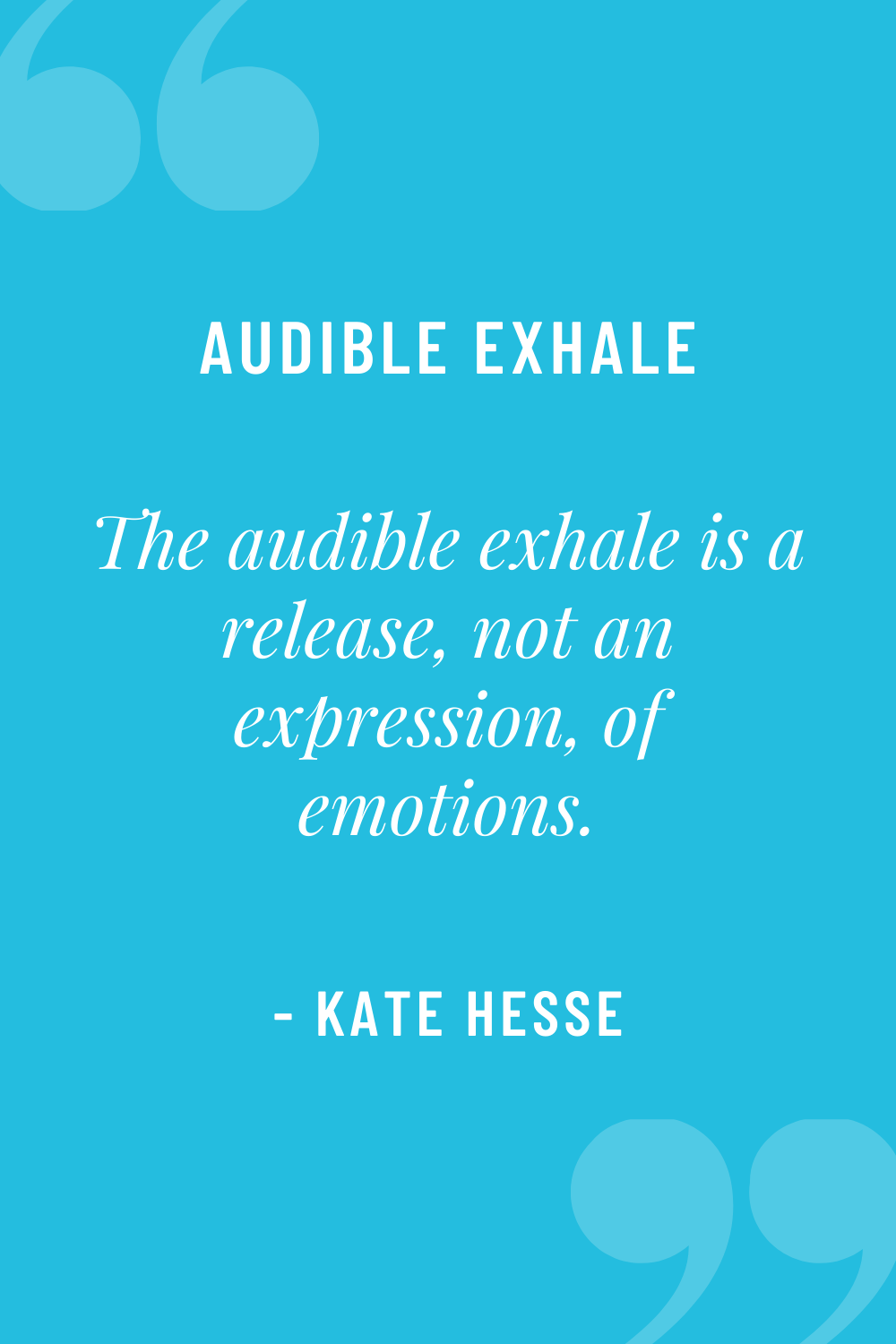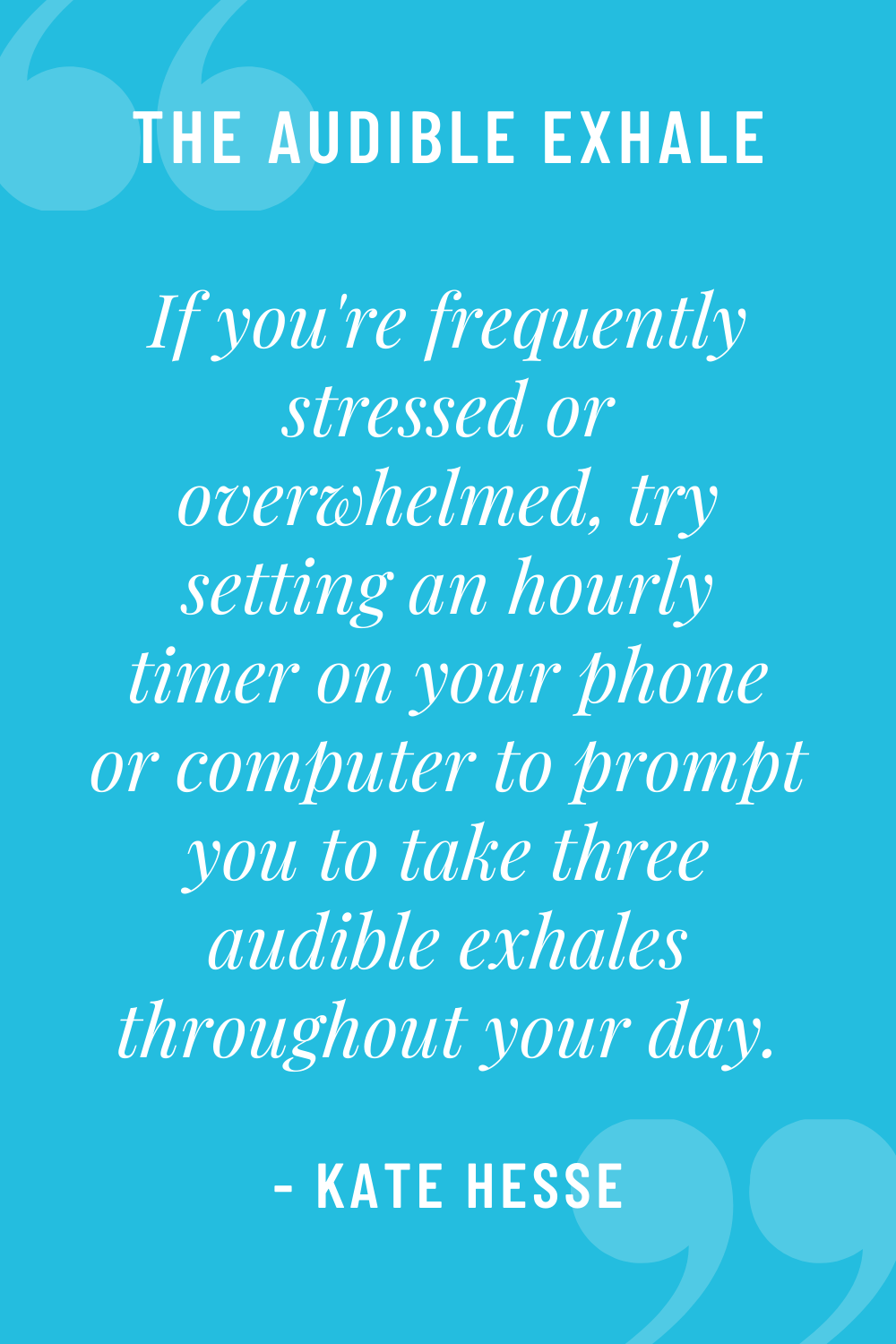
Inhale, and then let it all go with an audible exhale.
If you’ve ever taken a yoga class, you’ve probably heard someone suggest you take an audible exhale. I have a teacher who refers to it as a falling out breath and I love that imagery.
I like to imagine that with the exhale, I am releasing stress, anxiety, worry, anger, frustration – all those feelings which are not sitting comfortably in me. Just letting them fall right out of my body.
 The audible exhale is a release, not an expression, of emotions.
The audible exhale is a release, not an expression, of emotions.
This is not one of those – I can’t bear one more minute of this sighs we all let out sometimes.
We often think of any exhale which makes noise as a sigh, but it’s important to remember that what we’re doing here is originating deep in your core, coming from your body, not from you head.
You can take an audible exhale at any time – you don’t need to be in yoga class, you don’t need to be seated or lying down, but you do need to be present. The audible exhales work precisely because you are present and tuning into anything that’s ready to move out of your body.
It’s important to remember that you don’t need to name the emotions or sensations, or know where they’re coming from or why you’re feeling them. What is important, is to know they’re present and that you’re ready and willing to release them.
How to get the most benefit from the breath
If you’d like to close your eyes and be guided through this process, here is an audio file with guided instructions for taking an audible exhale.
To take an audible exhale, first turn your focus inward, do a quick scan and identify any place where there’s tension in your body. (I find it easier to do this with my eyes closed, but with practice, you can even do this in the checkout line at the grocery store.)
Now take a deep breath, filling up your belly and mentally directing the breath toward any tension in your body.
Once you’ve reached the top of your inhale, pause. Then mentally swirl the breath in your body around the tension, open you mouth, and with an audible exhale, release that tension.
Repeat this a few times (I like to take three audible exhales in a row).
Why the audible exhale works
 The audible exhale is a trigger that signals to your body it’s safe to shift from the sympathetic nervous system (fight, flight, or freeze) and into the parasympathetic nervous system (rest and digest).
The audible exhale is a trigger that signals to your body it’s safe to shift from the sympathetic nervous system (fight, flight, or freeze) and into the parasympathetic nervous system (rest and digest).
While it might feel like magic, this is simply your body responding to the change in your respiration pattern. When we’re stressed we tend to take short, shallow breaths. When we’re relaxed, we take slow, deep breaths.
By consciously breathing in the manner your body would naturally use when you’re relaxed, you send messages to your nervous system that it’s time to shift away from stress and toward ease. Learn more about the nervous system here!
When and how to use the audible exhale
 The audible exhale is a great preparatory breath before preparing for deeper relaxation (yoga, meditation, or going to sleep), it’s also a wonderful tool to remind you to you check in and lower your stress level throughout the day.
The audible exhale is a great preparatory breath before preparing for deeper relaxation (yoga, meditation, or going to sleep), it’s also a wonderful tool to remind you to you check in and lower your stress level throughout the day.
If you’re frequently stressed or overwhelmed, try setting an hourly timer on your phone or computer to prompt you to take three audible exhales throughout your day.
I encourage you to try practicing audible exhales throughout your day for a few days and get curious about the impact they have.
See if incorporating several of these breaths into your nighttime routine helps you sleep better.
Experiment with audible exhales during busy points of your day – does it make a difference?
I’d love to hear your experiences with audible exhales – please comment below and let me know what you think!
If you enjoyed working with the audible exhale, and want to add additional pranayama (breath practices) to your toolkit, check out: the belly breath and sama vritti!
Related
5 thoughts on “The Audible Exhale – A Powerful Stress Reducer!”
Leave a Reply Cancel reply
This site uses Akismet to reduce spam. Learn how your comment data is processed.
[…] for the future or rumination on the past, take three slow, conscious breaths. Bonus points for an audible exhale! After each exhale, remind yourself that now is the time to focus on […]
[…] examination feels like too much, I want to give you something a little easier to implement. The audible exhale is a tool that will allow you to immediately get relief from your […]
[…] by helping yourself to get fully present using a breathwork practice or mindfulness technique, or a guided […]
[…] you are new to pranayama or breathwork practices, I suggest starting with this or this before coming back to practice this technique. Since this breathwork practice requires […]
[…] covered the audible exhale in several previous episodes – and it would be a great tool to use in this […]